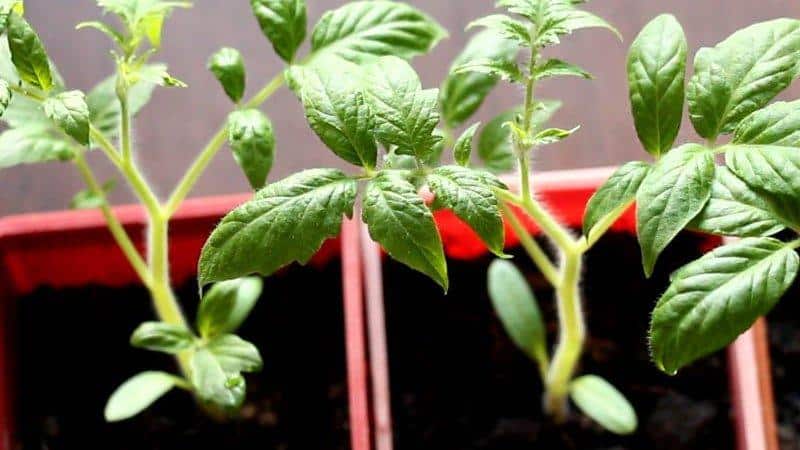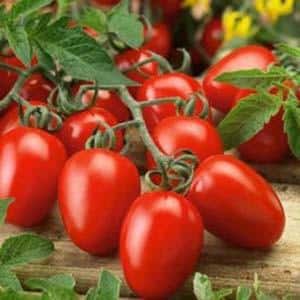How to choose tomatoes for seedlings
Due to the peculiarities of the climate of Russia, tomatoes are grown mainly in seedlings throughout its entire territory. This allows you to get a good harvest of fruits in a relatively short summer.
We offer an overview varieties tomatoes for seedlings and will dwell on the tricks of the process of growing seedlings at home.
Which varieties to choose for planting
It’s easy to get lost in the variety of varieties. Before choosing a variety, it is advisable for the gardener to answer the following questions:
- About the growing location: do you want to grow tomatoes in a greenhouse or in open ground?
- About the size of tomatoes: do you want to get a harvest of small, medium or large fruits?
- About the color of the fruit: do you want classic red tomatoes or other colors?
- About the purpose of use: tomatoes are needed for fresh consumption or for blanks for the winter?
- About the timing of ripening: do you prefer to harvest early, in the general season, or do you want tomatoes to delight you with their appearance when other varieties have already “moved away”?
- About the height of the bushes: are you ready to make extra efforts when caring for tall bushes or are you only considering low-growing ones?
The list of questions is not exhaustive. But once you decide on the answers to these questions, you will find the direction in which you will move further in the world of varieties and varieties this plant.

Review of productive tomatoes
No matter what tomatoes do you prefer (small, large, short or tall), among the most productive varieties of domestic tomatoes, experienced tomato growers identify the following:
| Name | Maximum yield per bush, kg | Characteristics of the variety |
| ox ear | 6 | Mid-season indeterminate |
| Grandmother's joy | 5 | Indeterminate variety of medium ripening |
| Dad | 4-5 | Early ripening indeterminate |
| Academician Sakharov | 5,5 | Tall and mid-season |
| Youth | 5 | Early determinant |
| Pickling delicacy | 4 | Mid-season determinant |
The above list is not exhaustive. Each tomato grower can choose from the whole variety the productive variety that he likes.
How to plant seeds for seedlings
Having decided on the variety of tomatoes and purchased seeds for planting, it is worth finding out the specifics of sowing. In addition to seeds, you will need containers and soil (soil) for planting.
Containers for planting
What can you plant tomato seeds in:
- plastic containers or cut plastic bottles;
- wooden boxes;
- peat pots;
- store trays for seedlings;
- carton boxes;
- disposable cups;
- plastic bags, etc.
Attention! Sometimes water will seep through the bottom of the container. Take care of a tray or stand for containers to protect the window sill.
Soil for planting
You can prepare it yourself or buy it at a specialized gardening store.
Requirements for good soil for tomatoes:
- acidity – neutral;
- free from weeds and pests;
- holds water well.
The best soil composition for planting tomatoes: 5 parts garden soil, 2 parts peat, 3 parts humus.
If the soil is purchased ready-made, there is no need to carry out additional manipulations with it. If you take your own soil for seedlings, then it needs to be disinfected.
There are several ways to do this:
- spill with a solution of potassium permanganate (dilute 2-3 g of crystals in 10 liters of water);
- freeze (leave outside for the winter);
- pour boiling water;
- heat in the oven or microwave (30 minutes at 50 degrees).
Attention! Some gardeners have a negative attitude towards boiling water and calcining the soil in the oven, believing that along with pests and diseases, beneficial microorganisms disappear from the soil.
Working with seeds
Seeds are planted in late February or early March. You will learn the timing recommended by the seed manufacturer for each variety from the instructions on the package.
Attention! Experienced gardeners advise when choosing tomato seeds to focus not only on calendar dates, but also on the current phase of the moon. Tomatoes, as a vegetable crop that produces a harvest in the above-ground part, are advised to be planted during the waxing moon (skipping the first 3 days of the new moon).
To ensure that seed germination is friendly, before planting, treat the seeds as follows:
- Disinfect in a slightly pink aqueous solution of potassium permanganate for 0.5 hours.
- Rinse under running water for several minutes.
- Place for 24 hours in an ash solution (a tablespoon of wood ash per glass of water).
After processing the seeds, they are planted in prepared soil. The depth of embedding is 1-2 cm. The container is covered with plastic wrap and placed in a warm place. Seeds germinate at a temperature of 23-25 °C. The first shoots will appear in 5-8 days. After the seeds germinate, the container is moved to a lighted place (on the windowsill). The film is removed.
Seedling care
Small seedlings are watered with caution. For irrigation, water is specially defended.
When the plant grows two true leaves, each sprout is planted in a separate container (picked).This is necessary for the full development of the root system. In new containers, the seedlings remain to grow until they are transplanted to a permanent location.
Two weeks before planting in the main place, the seedlings begin to harden off. First, cool ventilation is done, and then over time they are taken out of the warm room to the balcony for several hours. Then they leave there for the whole day (they return to the house at night).
How to plant seedlings in the ground
If tomato seedlings are intended for a greenhouse, then they are transplanted to the main place in late April-May. When to plant tomatoes in open ground? Taking into account climatic conditions (possible spring frosts), this is done in May-early June.
Before transplanting seedlings into the ground, it is recommended to treat the soil with a solution of copper sulfate (according to the dosage on the package).
They dig holes according to the planting pattern. For large tomato bushes, the distance between plants is maintained at 40-50 cm. And the same amount between rows.
Note. For tomato varieties with compact bushes, the distance can be reduced by 5-15 cm.
Pour 1 tbsp into each well. a spoonful of ash or superphosphate. Place the seedlings in the hole, freeing them from the container in which they grew. The hole is covered with earth. The planting depth is determined based on the height of the first leaf of the plant: it should be above the ground.
Immediately after transplanting, you should not overwater the plants. The opinion that heavy watering will help a tomato grow better is wrong. It is better to do moderate watering. This way, the plant in a new location will quickly overcome the stress of replanting and begin to develop the root system not in the upper layers of the soil, but lower them to a depth where the soil is more moist.
Let's sum it up
We looked at the basic techniques for planting tomatoes. It is important to follow all steps.To get strong and healthy seedlings, it is important to disinfect the seeds and planting soil and only then plant the seeds for seedlings. You already know how to grow it. Before transplanting into a greenhouse or open beds, it is better to harden off the seedlings - this way they will quickly adapt to the new place.
If you adhere to the rules and timing of planting, the seedlings will become strong and productive bushes and will repay the gardener for his attention and care with a good harvest.